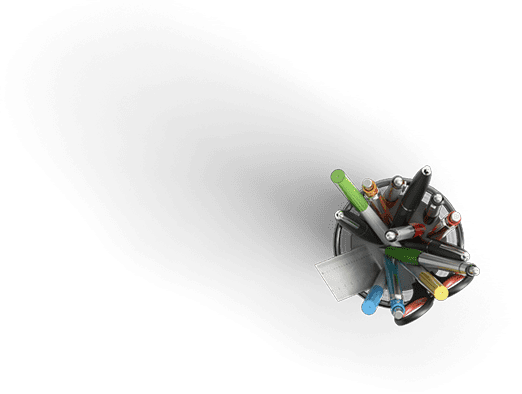Strategic Management
Description
Unformatted Attachment Preview
Assessment Structure Guidance for students
*Please note this is just one way of structuring the assignment and
students may use their own approach / structure.*
–
Title page
Table of contents using numbered headings, sub-headings and page numbers
List of Figures (appropriately numbered)
List of Tables (appropriately numbered)
Part 1 – Identify a key external factor impacting on your organisationàstrategic positioning ndertake a critical analysis of the macro environment and the relevant industry and consider
implications for your chosen organisation. You need to identify and justify a key issue facing the
organisation. (This section of the report should not exceed 750p% words)
1) Introduction (175 words)
You will likely introduce the main aspects of the analysis, potentially covering the
following:
he organisation you are analysing, the scope of the organisation and some key data e.g.
turnover, products & services, organisationàkey market (if the organisation has multiple
markets, then you may want to explain which market their work will focus on). You may choose
to focus on one business unit and/or one market.
hat makes this organisation strategically interesting, their key competitors and their strategic
positioning.
utline how the remainder of your report will be set up.
2) Macro Environmental Factors (100 words)
In this brief section you are required to identify key macro-environmental factors driving the
industry. You would need to think about the implications of these macro factors on the industry
and the organisation. These factors may change the way you shape the rest of the analysis.
Remember, this is in preparation for a better five forces analysis where the most analytical work
will be done.
3) Porteràfive forces analysis (400-475 words)
Usually discussed with each ¯rce4aken in turn. There is not in particular order, but you need
to think about how best to present your arguments. In addition, you should acknowledge that
the forces also impact on each other. You are required to conduct an industry (not
organisational) level analysis and then consider implications for your chosen organisation.
You need to make analytical / diagrammatic use of the five forces framework in the context of
your chosen company, and not just copy paste the generic diagram from the book or internet.
3.1) Bargaining power of suppliers
3.2) Bargaining power of buyers
3.3) Threat of substitutes
3.4) Threat of new entrants
3.5) Competitive Rivalry
You need to identify factors which are important currently but also consider which of
these factors will become more important in the next five years. Students should use the
Spider Web diagram to summarise the findings of the five forces analysis. All diagrams should
be appropriately labelled and referenced in the text.
4) Strategic Key Issue (75 words)
This will be a relatively small section but will be crucially important. You should be sure to
name the issue clearly, justify it based on the preceding analysis, and think about the
implications more specifically for their chosen organisation.
Part 2 – Evaluate your organisationàability to sustain strategic advantage ritically evaluate
your chosen organisationàability to respond to the key external issue you have identified in 1. You are
required to discuss the challenges arising from the issue within your industry and organisation.
Examples of such impact could include implications for the value system, changes in stakeholder
relationships, implications for resources and capability, changes in the competitive environment etc.
(This section of the report should not exceed 750p% words)
5) Based on the findings from Part 1, you need to choose two frameworks from the following
enu to evaluate your organisationàability to sustain advantage given the key issue their
organisation faces:
– Value Chain
– VRIO
– Stakeholder Analysis
– BowmanàClock
You would need to introduce / critique the two frameworks and explain how they have applied
these to their chosen organisation.
Value Chain (375 – 400 words) onsider max 5-6 key activities (from the value chain) of
the organisation that are most relevant to the key issue and compare the strengths and
weaknesses of these in relation to competitors. Does the key issue(s) identified from
external analysis affect the organisationàvalue chain activities or does it have
implications for the organisationàvalue system as a whole.
VRIO (375 – 400 words) dentify three key resources and capabilities of your
organisation and evaluate these using the VRIO framework and discuss these in relation
to competitors. Which of these resources and capabilities are most important when
considering the key issue, and whether any of these provide temporary and/or sustained
competitive advantage. You can establish whether your organisation has any particular
strengths or weaknesses.
Stakeholder Analysis (375 – 400 words) ¥view some of the key stakeholder relationships
and how they may be changing in relation to the key strategic issue. What role stakeholders
play in the organizationàstrategic decision making and its dynamism?
BowmanàClock (375 – 400 words) – discuss a few of the key comparisons between
companies2elative positioning, and explain any dynamism of change in the model i.e. whether
the key issue results in change of positions for the chosen organisation and its competitors.
Another important point to consider is whether the chosen organisationàcurrent strategy
remains appropriate for the future, in relation to the key issue.
Part 3- Develop and evaluate strategic options to respond to the key issue sing appropriate
strategic management frameworks, summarise the findings arising from your analysis in 1 and 2,
develop and evaluate strategic options to present key strategic recommendations for your chosen
organisationàBoard of Management to help them respond to the key external issue identified in 1 and
to sustain strategic advantage against their competitors. (This section of the report should not exceed
500p% words)
6) SWOT/TOWS Framework (175 words)
Use a SWOT/TOWS framework (this is not a simple SWOT analysis, you need to be clear on the
difference). Students are required to combine the findings from Part 1 and Part 2 to understand the
current position and develop strategic options (choices) for the organisation. A SWOT/TOWS
table alone is not sufficient, there must be a narrative to support that.
7. Evaluation of Strategic Choices (175 words)
Students need to use the SAFe framework to evaluate max 5-6 key strategic choices they have
developed using TOWS framework that are most relevant in relation to addressing the key
strategic issue
8. Recommendations and Conclusions (150-200 words)
Present two key strategic recommendations with clear justification and reasoning for the
organisationàboard of management to help them respond to the key external issue identified in
Part 1 and to sustain strategic advantage against their competitors and provide an insightful
conclusion. The conclusion should be directly related to the analysis and based on sound
evidencing throughout.
List of references (not a bibliography)
Please note table of contents, list of figures, list of tables, any tables and diagrams used, and
list of references are not counted in the word limit.
Purchase answer to see full
attachment

Have a similar assignment? "Place an order for your assignment and have exceptional work written by our team of experts, guaranteeing you A results."









